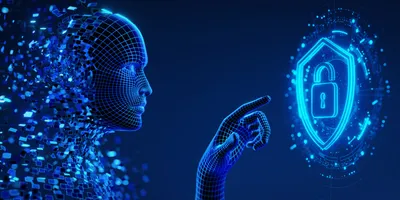As artificial intelligence (AI) and laboratory automation accelerate digital transformation, new vulnerabilities are appearing in research and clinical laboratories. The AI Reality Check report from Lab Innovations warns that cyberattacks against scientific institutions have increased dramatically, with many now fueled by AI itself.
“AI-driven IoT expands in laboratories, connecting sensors, instruments, and cloud systems—the attack surface grows,” explains Duncan Lugton, head of policy and impact at the Institution of Chemical Engineers. “A previously opportunistic threat has become a constant, adaptive one.”
The report points to the 2024 ransomware attack on the UK’s Synnovis pathology network, which cost approximately $41.5 million USD and disrupted more than 10,000 health appointments. While not all laboratory environments are clinical, the incident illustrates how dependent modern science has become on connected infrastructure—and how damaging downtime can be.
From safety protocols to digital vigilance
For decades, laboratory safety programs have focused on physical hazards: chemicals, biospecimens, and high-voltage systems. The report argues that cybersecurity now belongs in the same category. Modern operational technology (OT)—programmable logic controllers, distributed control systems, and automated instruments—was designed for reliability, not for modern encryption or continuous patching.
As these legacy systems integrate with newer, data-driven AI tools, they expose gaps that hackers can exploit. The takeaway for lab leaders: cybersecurity is not a separate discipline—it’s part of operational safety and risk management.
Lab leadership at the center of cyber resilience
According to Lugton, chemical and process engineers are uniquely positioned to bridge the divide between IT and OT systems because they understand both process safety and technical interdependencies. The same applies to lab leadership teams in research and testing facilities, who can align cybersecurity with safety culture by applying familiar frameworks: hazard analysis, root cause investigation, and layered prevention strategies.
Embedding cybersecurity reviews into procurement and validation workflows ensures that new instruments meet not only performance and compliance criteria but also security standards. This proactive approach aligns with the report’s central message: cyber protection is a shared responsibility.
Workforce development strengthens digital safety
The AI Reality Check report emphasizes that workforce development is just as vital as technology. Engineers, technicians, and researchers all need a baseline understanding of how AI can both create and amplify risk. Incorporating cybersecurity modules into technical training and continuing professional development ensures staff recognize and respond to threats quickly.
Lab Management Certificate
The Lab Management certificate is more than training—it’s a professional advantage.
Gain critical skills and IACET-approved CEUs that make a measurable difference.
Simple practices—verifying software updates, restricting remote access, and logging all connected devices—can prevent the majority of incidents. When cybersecurity becomes routine, it reinforces the same culture of accountability that laboratories apply to physical safety.
Safeguarding high-quality, data-driven science
Ultimately, cybersecurity supports the same objective as every laboratory safety initiative: protecting people, research, and results. The report concludes that laboratories must treat cyber preparedness as a quality standard, not an afterthought.
AI can also assist in defense—predictive analytics and automated anomaly detection help laboratories identify unusual activity before damage occurs. By combining these technologies with strong leadership and staff awareness, laboratories can sustain secure, high-quality operations that inspire confidence among regulators, collaborators, and the public.
The next evolution of laboratory safety culture won’t just focus on goggles, gloves, or containment—it will include encryption, monitoring, and responsible digital stewardship.
This article was created with the assistance of Generative AI and has undergone editorial review before publishing.












